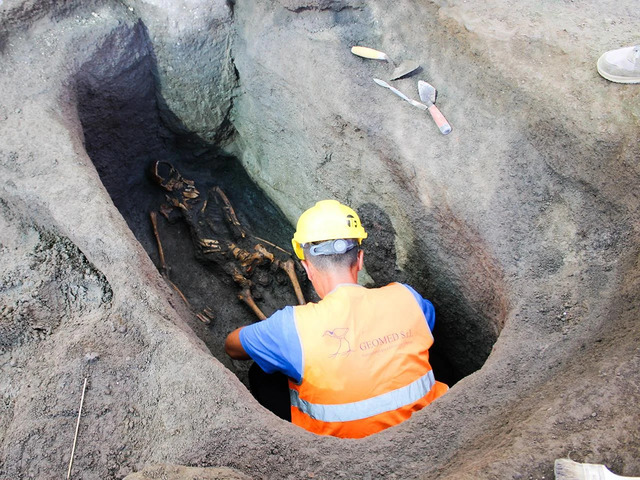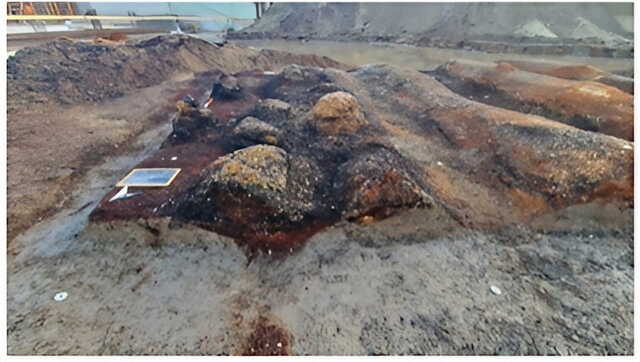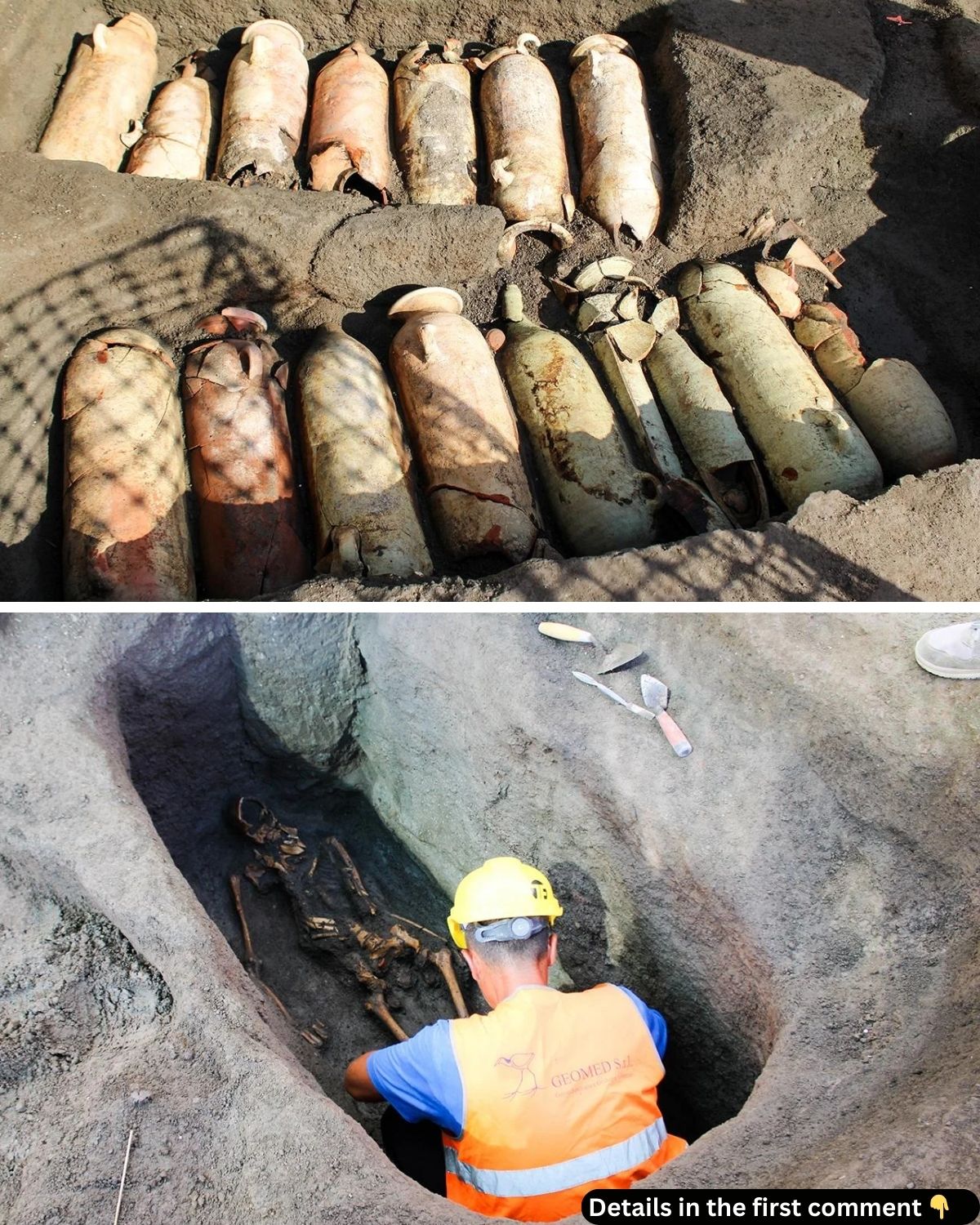Pompeii is widely recognized for its tragic and historical significance, having been buried under a blanket of volcanic ash from the catastrophic eruption of Mount Vesuvius in 79 CE. However, beneath the layers of ash lies a history far older than the Roman city we associate with the site today. Recent excavations near Pompeii have revealed a pre-Roman necropolis, shedding light on the area’s past before the rise of Roman power. This discovery provides valuable insights into the cultural and historical landscape that once thrived in the region.
The Pre-Roman Necropolis: A Step Back in Time
The pre-Roman necropolis discovered near Pompeii dates back to between the 3rd and 1st centuries BCE, a period that predates Roman colonization. This remarkable site, located just a quarter mile from the eastern edge of the Roman city, was uncovered during the construction of an underground parking lot and railway line modernization. The findings offer a glimpse into the practices and artifacts of an ancient population that occupied this area long before Pompeii was founded as a Roman colony in 89 BCE.

Excavations have revealed 35 pit burials, marked by a simple yet significant burial practice. The tombs are primarily earthen pit inhumations, with some containing covering amphorae—large, clay vessels traditionally used for storage. These amphorae, originating from North Africa, are arranged in a distinctive alternating formation, neck-to-tip. The choice of these vessels, along with the unusual arrangement, speaks volumes about the ancient burial rituals of the region’s inhabitants.

Video
Watch the video as a pre-Roman necropolis with amphorae-covered graves is unearthed near Pompeii – a stunning archaeological discovery!
Amphorae-Covered Graves: A Unique Burial Practice
Among the most intriguing aspects of this discovery is the use of amphorae to cover the graves. These vessels, often associated with trade and storage, have been found arranged in a specific pattern. The practice of placing amphorae over the graves may have held symbolic or ritual significance, reflecting the importance of these objects in ancient society. The presence of Punic inscriptions on some of the amphorae further deepens the mystery, as they offer a glimpse into the cultural influences at play in the region during this time.
The Punic inscriptions, written in the Carthaginian language, suggest a connection to North African trade networks, which were highly active during this period. This discovery highlights the cosmopolitan nature of the area, with Pompeii’s pre-Roman inhabitants likely engaging in trade and cultural exchanges with distant regions. The amphorae-covered graves not only reveal burial practices but also serve as evidence of the broader historical connections that existed long before the Roman Empire took control.

Artifacts and Funerary Objects: Insights into Ancient Life
While the graves themselves offer a wealth of information, the artifacts found within them provide further insight into the daily lives of those buried there. The graves contain a modest collection of funerary objects, including small ceramic bottles, known as unguentarians, which were likely used to hold perfumes or oils. Additionally, several coins were discovered, further suggesting the economic activity in the area.
The presence of these small but significant items paints a picture of a society that valued personal possessions even in death. These objects, while simple, reflect the social and cultural dynamics of the time, offering researchers a closer look at the lives of those who lived long before the Roman Empire took hold.
The Role of Groundwater in Preservation
One of the most fortunate aspects of this discovery is the preservation of the skeletal remains, which have been remarkably well-maintained due to the site’s proximity to groundwater. The immersion of the graves in water helped to preserve the bones, offering scientists the opportunity to conduct detailed paleoanthropological research. This preservation allows for the study of the ancient population’s physical characteristics, health, and other aspects of their lives that would otherwise remain unknown.
The discovery of well-preserved skeletal remains provides an invaluable opportunity for scientists to gain a deeper understanding of the people who lived in the region before the rise of Rome. Through this research, we may learn more about their diets, health, and daily lives, contributing to a fuller understanding of the ancient world.
The Canal Discovery: Insights into Roman Reorganization
In addition to the necropolis, excavations uncovered a nearby canal that contains materials from funerary contexts, such as tile fragments, amphorae, and large storage vessels. These artifacts, while not part of the burial site, offer insight into the broader historical context of the region. Researchers believe the canal was created following Sulla’s siege of Pompeii during the Social War (91–87 BCE). This siege, which resulted in the Roman conquest of Pompeii, led to significant changes in the city’s layout and infrastructure.
The canal, which contains remnants of destroyed funerary contexts, suggests that the area underwent a process of reorganization during the Roman conquest. The materials found within the canal, including tiles with Oscan inscriptions and volcanic stone columns, further corroborate the idea that Pompeii’s pre-Roman landscape was significantly altered during this period. This discovery provides a crucial link between the pre-Roman necropolis and the Romanization of the region.
Roman-Era Agricultural System Beneath Pompeii
In addition to the necropolis, excavations revealed traces of a Roman-era agricultural system preserved beneath the ashes of the 79 CE eruption. These plowed fields, which were likely used to cultivate vegetables, provide evidence of the agricultural practices that supported Pompeii’s markets and households. The fields are oriented north-south, following the course of the ancient Sarno River, which was much closer to the city at the time.

The discovery of these fields offers new insights into the daily life of Roman Pompeii. Organic remains and pollen analysis have indicated that the fields were used to grow crops such as perennial artichokes, a popular vegetable in ancient Roman cuisine. This find underscores the importance of agriculture in the ancient city and highlights the interconnectedness of Pompeii’s urban and rural environments.
Preventive Archaeology: Protecting the Past for the Future
The discovery of the pre-Roman necropolis and Roman agricultural system is a testament to the importance of preventive archaeology. This approach, which involves conducting archaeological investigations before construction projects begin, ensures that historically significant sites are properly documented and preserved. The excavation efforts near Pompeii are part of a broader initiative to protect and enhance the region’s archaeological heritage.
Collaboration between the Superintendence of Archaeology, Fine Arts, and Landscape for the Naples Metropolitan Area, the Municipality of Pompeii, and other authorities has made these discoveries possible. Through these partnerships, archaeologists have been able to uncover vital historical information that would otherwise have been lost to modern development. As the excavation work continues, researchers hope to uncover even more insights into Pompeii’s ancient past.
Video
Watch the video showcasing the discovery of a pre-Roman tomb in the ancient town of Pompeii – a remarkable find from history!
Conclusion: Unveiling Pompeii’s Pre-Roman Past
The discovery of a pre-Roman necropolis near Pompeii offers a fascinating glimpse into the ancient world before the rise of the Roman Empire. From the amphorae-covered graves to the agricultural systems preserved beneath layers of volcanic ash, these findings contribute to a deeper understanding of the region’s history. As research continues, new discoveries will undoubtedly provide even more answers, helping to complete the picture of Pompeii’s pre-Roman and Roman periods.
These excavations not only reveal the lives of ancient peoples but also remind us of the importance of protecting and preserving our shared historical heritage. As archaeologists continue their work, we can look forward to even more discoveries that will illuminate the rich and diverse history of this iconic site.



